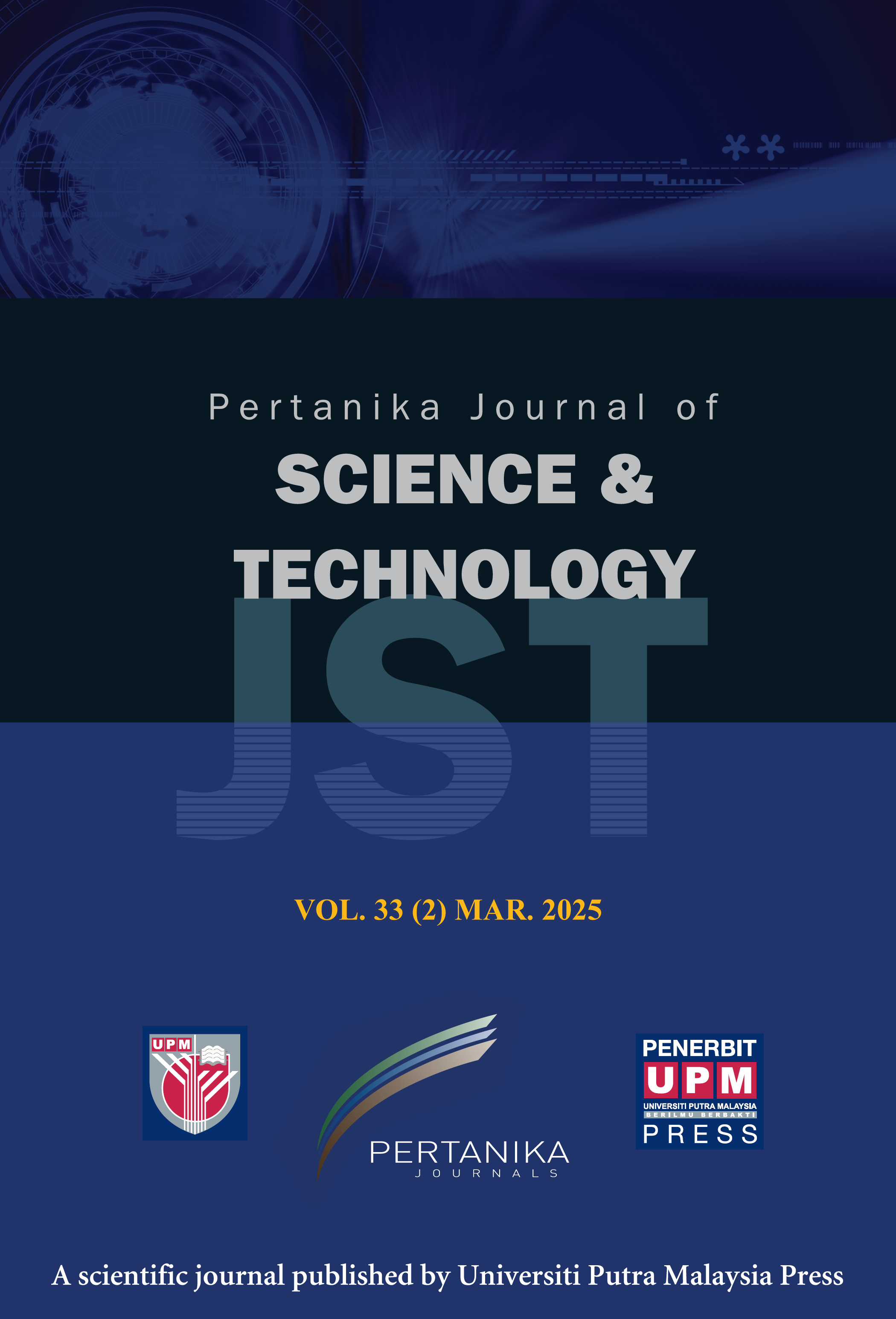PERTANIKA JOURNAL OF SCIENCE AND TECHNOLOGY
e-ISSN 2231-8526
ISSN 0128-7680
State-of-the-art CNN Models for Plant Disease Classification: A Comparative Study
Tanko Daniel Salka, Marsyita Hanafi, Sharifah M. Syed Ahmad Abdul Rahman and Dzarifah Mohamed Zulperi
Pertanika Journal of Science & Technology, Pre-Press
DOI: https://doi.org/10.47836/pjst.33.6.07
Keywords: Convolutional Neural Networks (CNN), deep learning model, plant disease classification, PlantVillage
Published: 2025-09-30
Plant diseases pose a significant threat to global food security, resulting in substantial agricultural losses. Traditional methods of diagnosing plant diseases rely on manual observation, which is time-consuming and prone to errors. Recent advancements in deep learning, particularly Convolutional Neural Networks (CNNs), offer a promising solution for automating and improving the accuracy of plant disease classification through image analysis. This study evaluates the performance of five state-of-the-art CNN architectures: VGG16, GoogleNet, EfficientNet B0, ResNet50, and DenseNet201 for plant leaf classification using the PlantVillage dataset, which comprises 54,305 images across 38 classes. Among the models, VGG16 achieved the highest accuracy of 93.75% and recall of 93.75%, with a low loss of 0.48, though it has a larger parameter size of 56.79 MB. GoogleNet followed closely with 88% accuracy, a high F1 score of 0.93, and a balanced size of 85.51 MB, despite a higher loss of 0.96. ResNet50 demonstrated strong performance with 84.36% accuracy and 0.35 loss, but was the most resource-intensive at 100.17 MB. EfficientNet B0, the smallest model at 18.62 MB, achieved 84.37% accuracy, whereas DenseNet201 underperformed, attaining only 69.32% accuracy and 1.06 loss, despite its moderate size of 28.01 MB. These findings highlight trade-offs between accuracy and computational efficiency, with VGG16 and GoogleNet excelling in precision, while EfficientNet B0 presents a compact alternative for resource-limited settings. This study provides valuable insights for selecting optimal CNN models for plant disease detection based on specific agricultural needs.
ISSN 0128-7702
e-ISSN 2231-8534
Share this article

